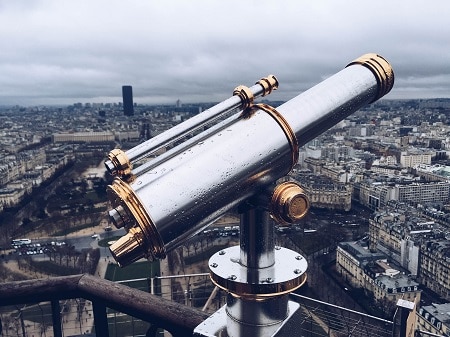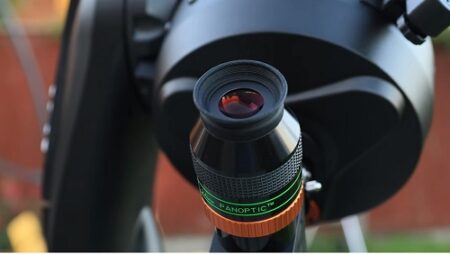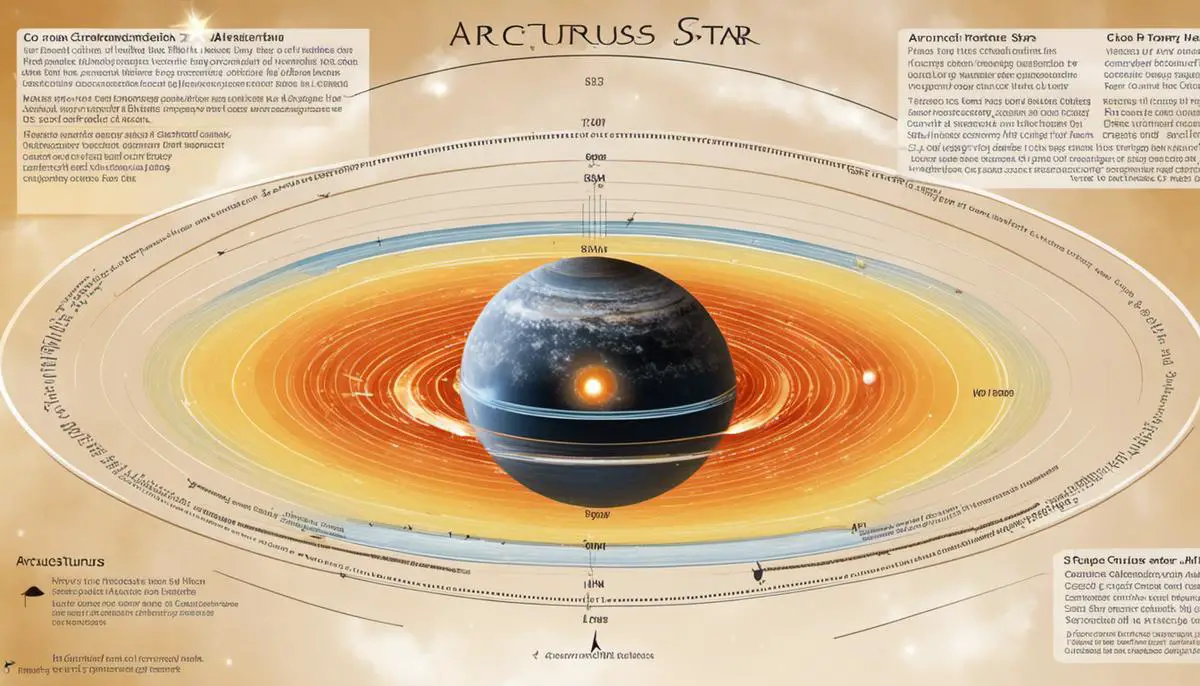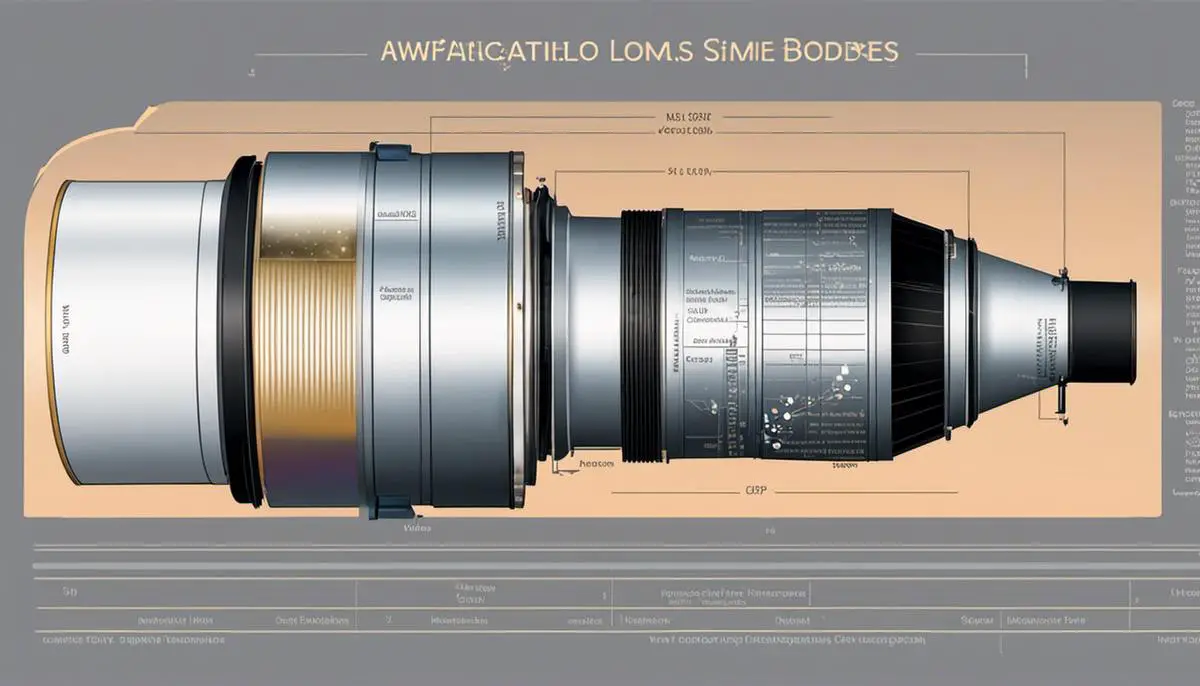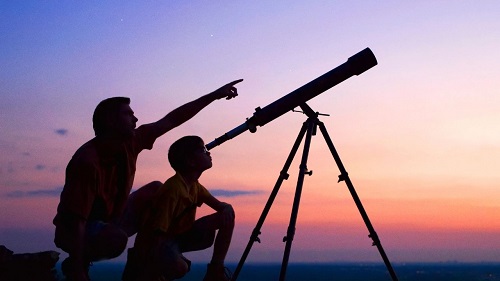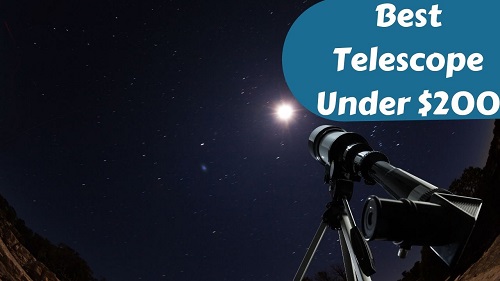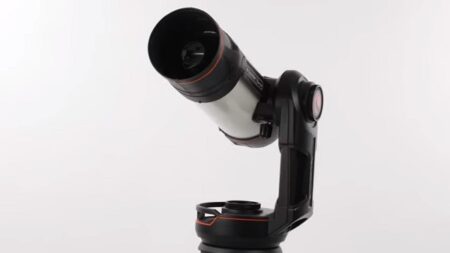A Refracting telescope, also called a dioptric telescope is used for seeing the distant objects. It uses the laws of refraction of light to make an image of the actual object and magnifies it so that it is visible to the observer. Refracting telescope is very easy to use due to its simple mechanism and this makes it popular for watching planets and moon.
In this article, I will talk about the working mechanism of a refracting telescope. It explained it easily. Therefore, if you don’t have any basic knowledge about it, you will still be able to understand how a refracting telescope works.
So, let’s get started
Basic Components of a Refracting telescope
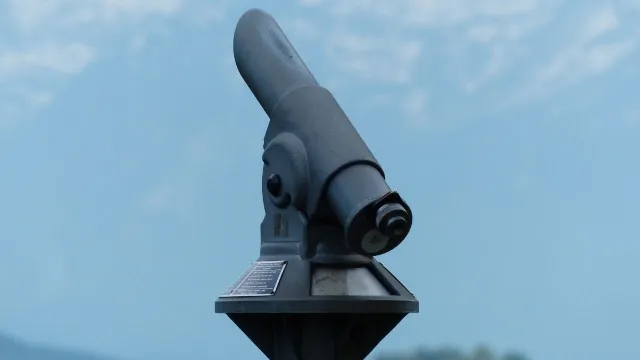
Inside the tube of a refracting telescope, there are two lenses, the objective lens, and the eyepiece lens. Both of these lenses are convex lens where refraction of light from far objects takes place and a magnified image of the object becomes visible to the observer.
The objective lens is at the front of a refracting telescope and the important one. It collects the light rays from the focused object and magnifies it.
This lens is large and has a long focal length. Being large this lens can gather more light and because of the long focal length, it can magnify the object.
The secondary lens, the eyepiece is used for regulating the magnification of the telescope. It is a smaller size lens compared to the objective lens and has less focal length.
The Main Working Principle of a Refracting telescope
As the name suggests, a refracting telescope works by the principle of refraction of light.
But what is the refraction of light exactly?
I will explain it to you briefly.

In the image above, the dotted line is the normal line, the blue one is a ray of light. Every substance through light can pass has a refractive index. The higher the index, the more capability it has to bend the light. When light enters from a lower refractive index medium to higher index medium, it bends to the normal line. The opposite occurs when light enters from higher to lower.
The same incident occurs for a refracting telescope. Light travels through void and air from faraway objects to the objective lens. Finally, it enters into the glass lens from the air and refraction of light takes place. The final result is the creation of an image of the object at the focal point. That is further magnified by the eyepiece lens.
How Does A Refracting Telescope Work?

Although some of the refracting telescopes use advanced construction for better image creation, the core principle is the same for all refracting telescopes. Here will talk about how a basic refracting telescope works.
Creation of First Image by the Objective Lens
Light from far objects enters the objective lens. According to the rule of refraction the rays of the light bend towards the main axis.
Now due to bending, all the rays that come as parallel to the axis converge at the focal point of the objective. On the other hand, the rays that cross the lens through the center point of the lens takes a straight path.
This way a small image of the object is created at the focal point of the objective lens which is between the two lenses. This image is called the primary image. The size of this image is very small to see and needs to be magnified. That is why we need a second lens, the eyepiece.
Creation of Second Image by Eyepiece
The second image is created by the eyepiece lens and this is the image that you see when observing an object through a refracting telescope.
For the eyepiece, the first image, which was created by the objective lens is the object. Light enters the eyepiece just like the objective, but now instead of creating the image in front of the lens, the image is created behind the objective lens as you can see in the image above.
One thing you should know that the image created by the eyepiece is not a real image, rather it is created by extending the incoming ray toward the object.
This image way larger than the first image which makes the object visible to the observer.
Magnification of Object
If said simply, the term magnification means how many times the image is bigger than the actual object.
The magnification power of any refracting telescope depends on the focal length of the lenses used in it. Magnification of a refracting telescope is the ratio between the focal length of the objective lens and the eyepiece.
Magnification = Focal length of Objective lens / Focal length of Eyepiece
The more the magnification power the farthest it can see. Normally, for a refracting telescope, the objective lens is fixed, but that doesn’t mean that you can’t change its magnification of it. You can change the magnification by changing the eyepiece of the telescope.
For example, the Orion 9024 AstroView 90mm Equatorial Refractor Telescope comes with two eyepieces, 25mm, and 10mm. That means when you use the 10 mm one replacing the 25mm one, the magnification power will be increased and you will be able to see objects from a more distant place.
Factors That Decide the Image Quality of Refracting telescope
Quality of Lens
Quality of the lens determines the quality of the image created by telescope. It is never possible to get a quality image from a low-quality lens and also, there is no way to improve the image that is taken by a bad quality lens.
Bad lens creates problems with image clarity. They tend to give a blurred image. On the other hand, distortion also takes place in the image as a low-quality lens bends due to its weight.
Size of Lens
The size of the lens is also a determining factor for quality images. The larger the size of the objective lens, the more light it can gather. The more light you have from any object, the more clearly you can see the object.
You can raise the magnification power of a refracting telescope by increasing the focal length of the objective lens or by decreasing the focal length of the eyepiece, but it has nothing to do with the clarity and quality of the image. It will only help you see objects from a far distance. To increase the quality of the image, you have to use a considerably large size objective lens.
Advantages of a Refracting Telescope
As I have told you in the beginning, refracting telescope is very easy to use because of its simple construction and working mechanism. As it has only two lenses there is barely any chance of misalignment once you have aligned it. This is the main point behind its popularity. In fact, it is most popular among the beginners for stargazing.
Handling a refracting telescope isn’t hard like other types of telescopes. Therefore, there is very little chance of damage to the instrument. On the other hand, it requires very little maintenance because all the main lenses are sealed inside the tube. So it will rarely require to clean the instrument.
Again, it costs less than other complex telescopes and that makes it suitable for entry-level stargazing.
The Limitations of a Refracting telescope
As telescopes are set with the vertical to some degree, the objective lens can sag due to its large size and nothing can be placed to support it from the bottom. As a result, the quality and clarity of the image can be hampered.
The second problem with a refracting telescope is chromatic aberration. This happens because the light of different colors bend at a different degree when it changes medium. As a result, when you see a white object, like stars, you will see a halo surrounding the image. But if you use a good telescope you won’t face this problem as they use a thin third lens behind the objective lens to offset this problem.
Conclusion
As you have read this far, I can certainly assume that now you have a better idea of how a refracting telescope works. If you are interested to have one of the for sky viewing, I will suggest you choose one that has a large objective lens and offers a wide range of eyepiece so that you can change the magnification power of it.
If you have any queries about telescopes, let me know in the comment box.
Hi, Daniel Here! When I’m not busy working at my own startup, you may find me roaming around the Univers and whats beyond our sky, telescope is a must.

